Why UX, UI, CX, IA, IxD, and Other Sorts of Design Are Dumb
What do you do? What title do you put on the resume and portfolio? Why these words? I invite you to an exploration of how design titles and directions are (not) connected with the real world. So, let’s take a look at the current state of things. I guess you’ve seen different attempts to distinguish between UX and UI, UX and CX, user experience and product design, and so on. And you might have seen schemes about designer types like UI and UX designer, UX and IxD designer, etc. They are adorable. Diagrams showing what is what have got extremely sophisticated over time.

This is a vivid reflection of the phenomenon I’d like us to chew on. If you’ve ever googled such stuff, you’ve probably noticed they give few answers and don’t tell much about us — designers.
Something significant is always missing in all these differentiations. Where is… value? Money? Social or business goal? If any measurable value is not taken into account, such diagrams can only serve a topic for designers’ snobbish chatter at 10 AM near the coffee machine. For the majority of people — people who do not live in the world of pixels, fonts, and canvases — it’s nonsense. And it surely seems twaddle to our clients.
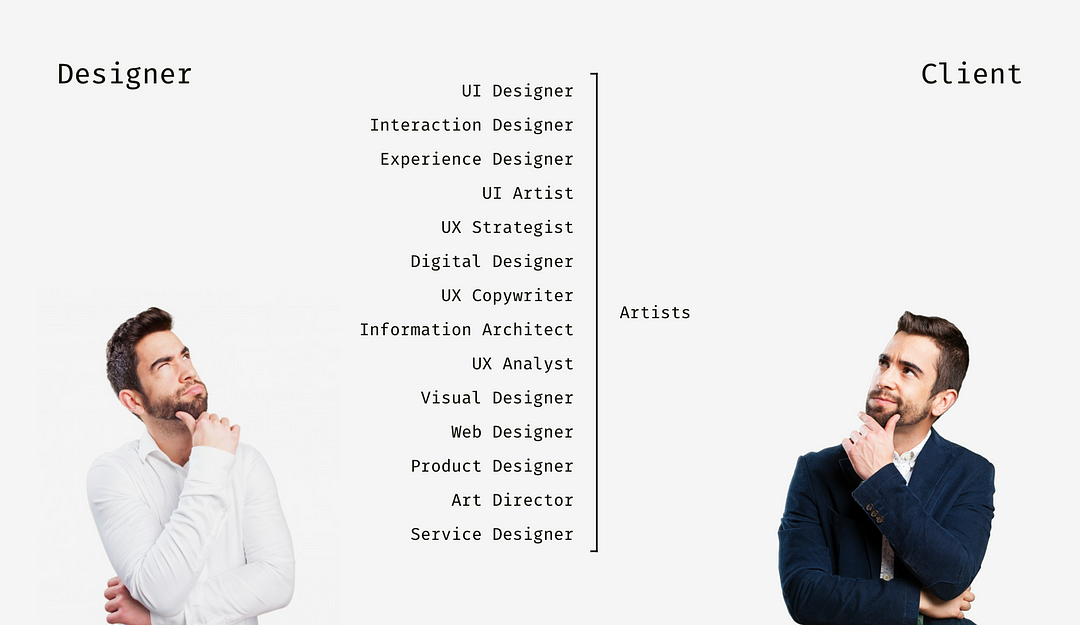
I remember time when I tried to “enlighten” clients and rolled my eyes at them when they confused design terminology. Now I know for sure who created so-called clients from hell — designers from hell. Such as me years ago. We are in the trapping pit we’ve dug. Difference between UX, CX, UI, IxD, etc. doesn’t ring non-designers a bell. And it doesn’t have to because the difference is theoretical.
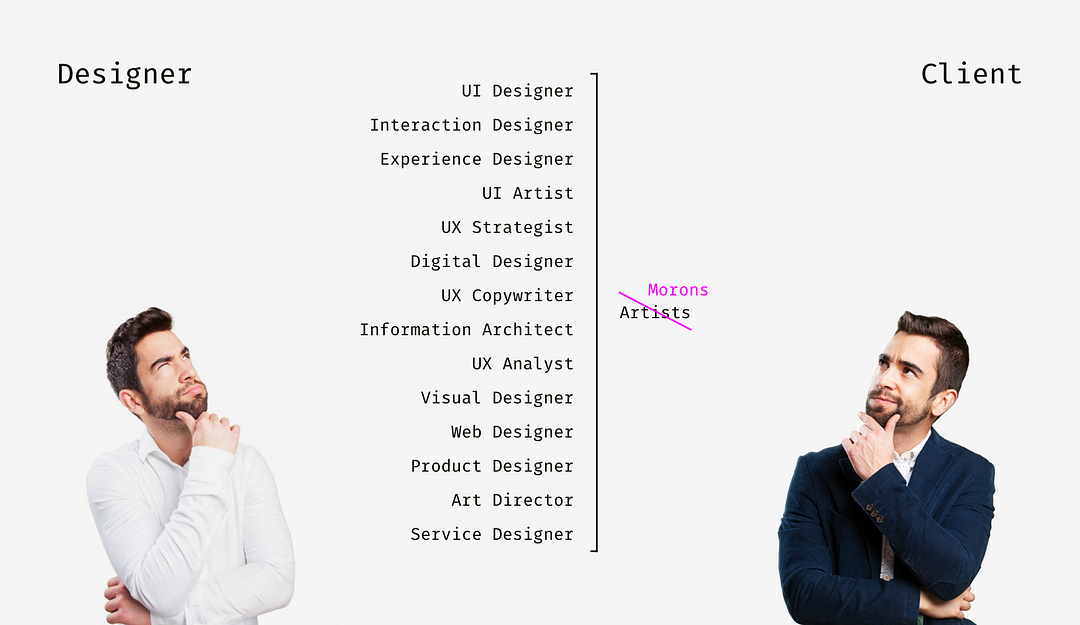
I have a hypothesis that the modern outbreak of creative design types and titles is a kind of resistance to stereotypes. Maybe we are adding descriptive words and replacing “designer” with “strategist”, “architect”, “analyst”, and “developer” to run away from “make it look sexy”. The latest trend is to call yourself a product designer or a product manager (whatever it means). Product has become the new UX these days. Isn’t it a vicious circle? People, whose titles “entrepreneur” and “CEO” are existing for decades, laugh at our constantly changing job naming.
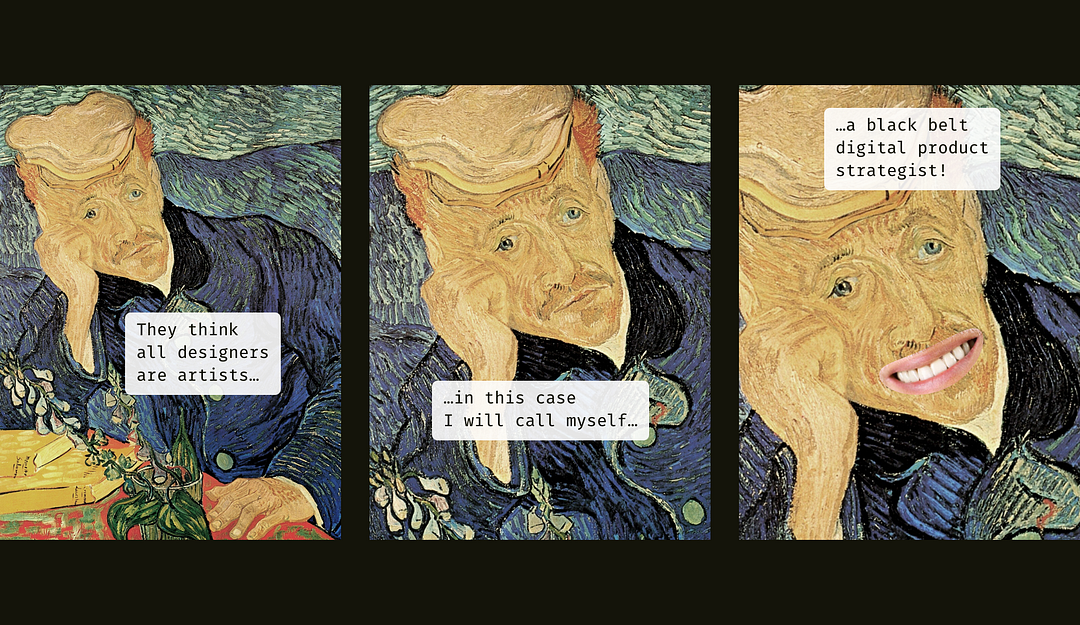
There is no matter what you call yourself and your approach if the result of work lacks tangible value. If a designer draws wireframes, prepares prototypes, conducts workshops, but cannot deliver a design solution for a problem, he or she is anything but a designer.
Clients care about what you do only when you care about their business.
So, what are designers supposed to do? Where is the balance between focusing on a narrow area or being in charge of all design activities? Where is the verge between drawing mockups and influencing the world behind the window? There is a popular idea that the T-shaped skillset is the best for a designer. It means a designer has deep competence some area and decent knowledge in the rest of design areas.
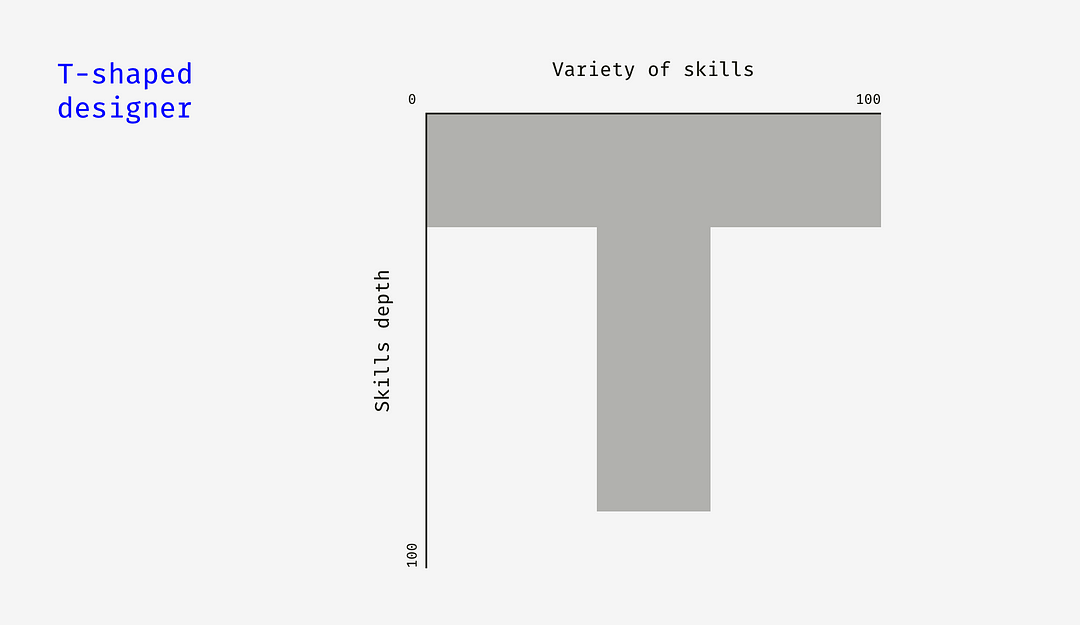
However, we are living in a weird age. There is a bunch of dick-shaped designers proud of knowing one narrow area and a trifle of neighboring ones. Such skills don’t allow to think strategically and keep the final value in mind.
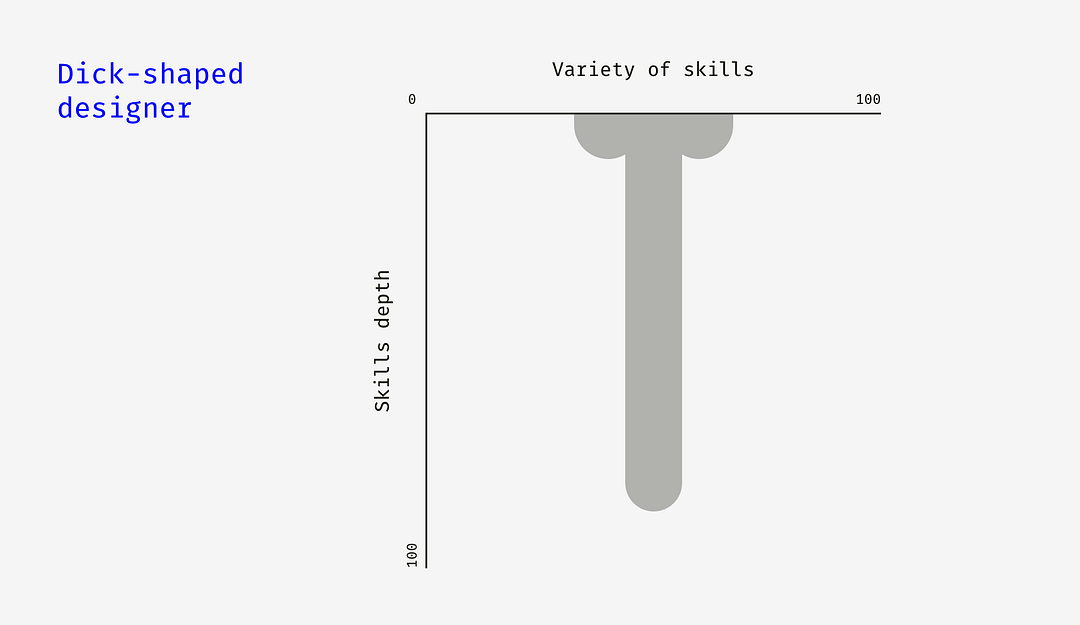
I often hear, “Oh fuff, I don’t draw icons. I’m a UX designer. I pass my wireframes to a UI guy”. Or, “I pick the color palette. You’d better ask about the business model that girl at the whiteboard”. What’s next? There will be Blue Button Designers? (Do not confuse with Red Button Designers.) Flat Icon Architects? Customer Journey Map Strategists? Principal Sticky Note Peelers? Helvetica Poster Developers? To feel how grotesque it sounds try transforming some non-design job titles. Steel Hammer Carpenter, Motor Yacht Sailor, Asian Flavor Cook, Beretta Gun Soldier…
“UX/UI designer” sounds as awkward as “vegetable/carrot salad” or “vehicle/bus driver”.
And since design thinking is a hype nowadays, there is another problem. I call it em-dash-shaped designers. They attend dozens of design conferences and courses, try themselves a little bit in different directions but can not produce anything valuable and complex. Those guys like mentioning all the areas they pretend to know. For instance, UI/UX/Web/Mobile/Desktop Designer, Service/Digital/Product Designer/Manager.
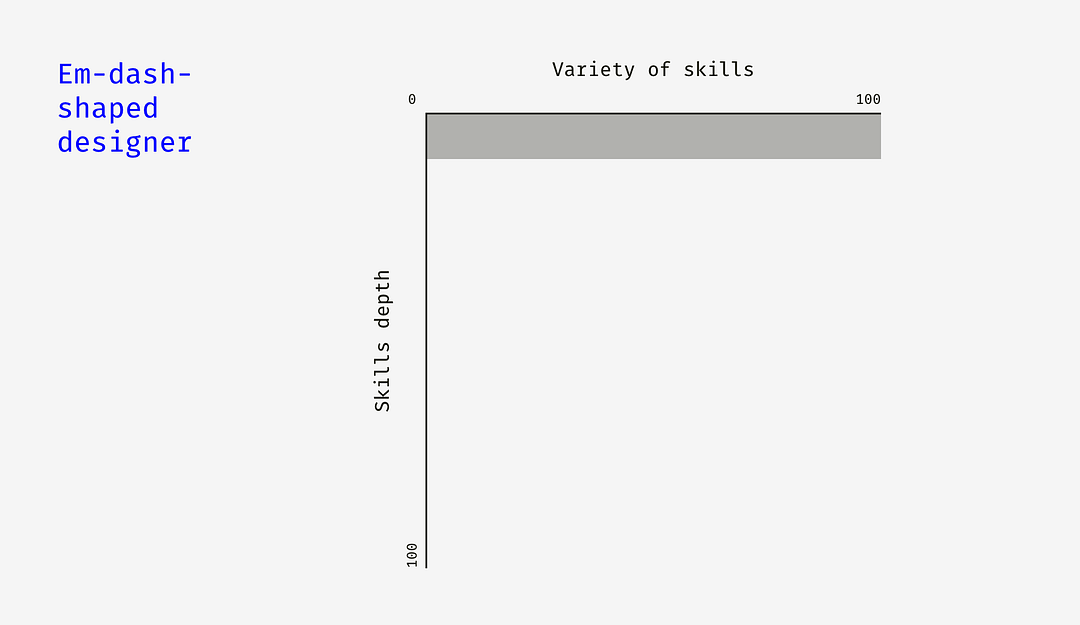
You may disagree, “It sounds cool in theory. But these buzzword titles are exactly what HRs and recruiters are looking for”. Well, this is right to a certain extent. And there is a point where professional dignity goes in. If it becomes trendy to call our job “Pixel Mover” or “Photoshop Operator”, will we put it on resumes? Of course, we are not there yet, but we are moving towards when conforming to trends.
I think large companies have contributed to unteaching designers to be… designers. This zoo of designer and design types is the result of granular work distribution in big teams. Designers are doing their small parts and gradually unlearn to test them against the final goal. Throw stones at me, but the end-to-end design process is a must for any designer, although they can specialize in something. From a bird’s eye view, there is a universal design workflow.
Methods vary for every industry but the core is the same: research, ideation, validation, implementation.
If we call ourselves designers, I believe we should take responsibility for the whole product fate even doing a small portion of work at a time. If icons, wireframes, mockups, icons or prototypes are neat, but what users see is a disaster, designers haven’t done their work. Let me make myself clear. I don’t promote being a design generalist versus a design specialist. Just pointing out a professional misbalance and ambiguity we have nowadays. It seems design has the most unstable borders among all the jobs.
Now we can return to the questions I asked at the beginning. What are we? Why these words? And here is another interesting observation. Designers used to call themselves after what they did. Present-day titles more and more reflect how we work because there is not much difference between designing a mobile interface and a microwave oven. “If you can design a thing, you can design anything”, said Massimo Vignelli. Methodology is what matters a lot. What are the steps that guide us to good solutions? How can we measure their benefits? Businesswise, what helps to make more money?

We should be able to show the measurable value of what we consider is right. Sometimes designers propose solutions that don’t bring income immediately but attract loyal customers. Loyalty and reputation will bring money in the future. The task is to show how it’ll be possible. It’s like playing chess. The more steps ahead you think, the more credibility and trust you gain.
The value of design is one of the basic topics in our profession, and more and more I feel lack of it. Photoshop, Sketch, pixel perfection, customer journey maps, visual language don’t make us designers. The same way a hammer and a saw don’t make someone a carpenter. We are designers when we solve problems and contribute to something valuable.
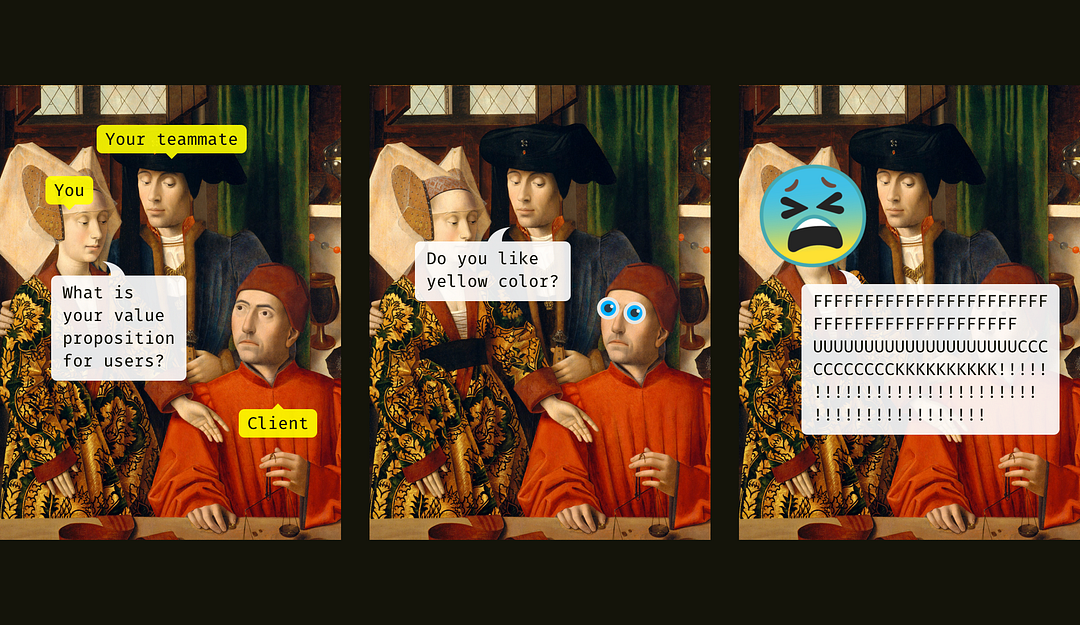
There will always be people and situations that break the reputation of our profession. A popular meme says there will always be someone who can do it cheaper and worse. Fortunately, there are simple things we can do to support the positive image of designers.
1. Call your job clearly and concisely
After the decades of evolution, only the word “designer” has left unchanged. If you put any words before “designer” check whether they can stay relevant in ten years or so. And beware of referring to one particular tool or method because this makes you look limited. In all times serious, mature clients weren’t searching for wireframe-artists and button-creators. They need market-conquerors, problem-solvers, and money-multipliers. If you are one of them, you are at the helm of changes. Specializing in something is good until it becomes an obstacle for understanding the whole business. I personally like calling myself just a designer. The fact that I design interfaces (not interiors or clothes) becomes clear from the industry of the company I work for.
2. Showcase not work, but the value added
It might turn out that many works are lacking tangible value. Oh, I know that from my own experience. Instead of “Designed look and feel for a financial app” try “2x speed-up of the sign-up to a financial app”. For the project “Design of a logistics VR concept” consider “VR concept that estimatedly can save up to 40% of the delivery cost”. Value can be both financial — earning or saving money — and social — making one’s life better. “I’ve done” is stronger and more result-oriented than “I did”.
3. Collect and create the proofs of design impact
Clients will always be challenging our designs and questioning our proposals. And the bigger a project is, the more businesses risk when rely on unproven designs. So we should learn from the evidence of design impact on business and people and generate such evidence. One of the recent cases is Forrester’s study on how design thinking techniques have affected the economic performance of IBM.
On the other hand, there are widely-spread myths about the value of design. It’s really hard to extract design from all the activities and say something like, “A week of designer’s work brings $10k income to our business.” One of popular fake facts states, “$1 invested in design brings $100 of income”. This idea is absent in the book it usually is associated with. The more we refer to such unproven factoids, the more come across as “artists”. It’s designers’ responsibility to replace myths with research data.
Recommended materials
Much more experienced and knowledgeable designers inspired me to write this humble article. By getting acquainted with their opinion too, you’ll have a broader picture of what’s happening in the design world.
- Mike Monteiro, “You Have Been Lied to”, a video recording of the keynote at Interaction-2015 conference. One of Mike’s thoughts is that everything that helps designers to do their job is the part of their job.
- Mike Monteiro, “Design’s Lost Generation”, an article on designers’ professional ethics and making a choice between earning a living and doing what is right.
- Alan Cooper, “When Companies Question the Value of Design”, an article about the reasons designers can not communicate the value of their work in terms of money. (Paid reading but it’s worth it.)
Instead of post scriptum — a recent tweet by “Father of Visual Basic”.
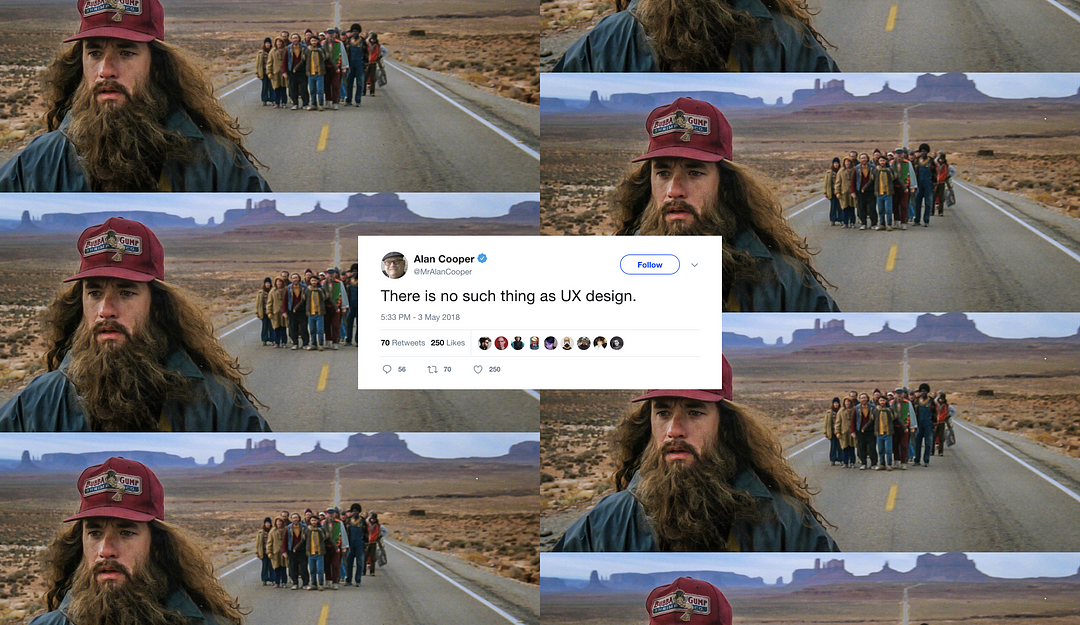
Feel free to get in touch elsewhere: Dribbble, Behance, SlideShare, Instagram.
Source: Medium


